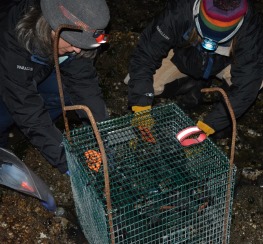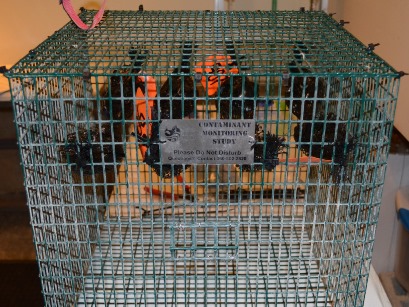
An army of volunteers fanned out along Puget Sound over several nights this week to help anchor cages of live native Penn Cove mussels at the zero tide water line in support of the Washington State Regional Stormwater Monitoring Program. The volunteer effort is being led by the Washington State Department of Ecology and the Washington Department of Fish and Wildlife to assess the ongoing effectiveness of current stormwater management practices throughout Puget Sound. In support of this regional study, Farallon’s team of Kim Carlton, Paul Grabau, and Lyndsey Needham trekked out under a full October moon to its designated Birch Bay monitoring location to deploy one of the mussel cages.
Stormwater is one of the leading contributors of pollution to urban waterways in the state. Stormwater is defined as the flow of water resulting from rain and/or melted snow over hard surfaces such as rooftops, paved streets, highways, and parking lots that eventually drains into local waterways. Pollutants such as oil, fertilizer, chemicals, and pet waste are carried along with the stormwater, ending up in the waterways.

Mussels are filter feeders and are widely used as bio-indicators to monitor the health of aquatic environments. Each mussel filters between 12 and 20 gallons of water per day, accumulating in its tissue nutrients and chemicals from the water column. The caged mussels will remain in place throughout the rainy season when stormwater flows into Puget Sound are greatest. The mussels will be retrieved in February for laboratory analysis of their tissue, and results will be tracked as part of the continuing monitoring effort.